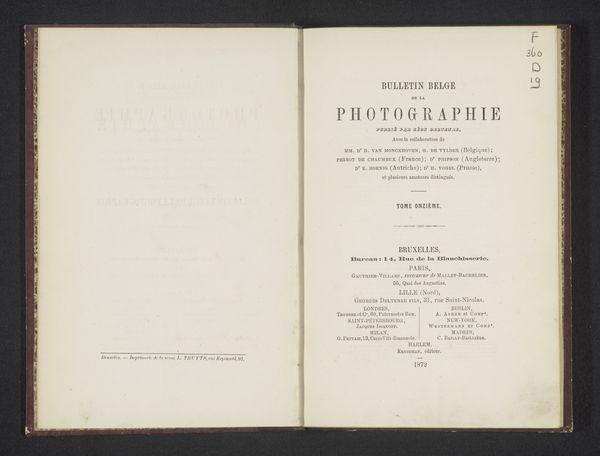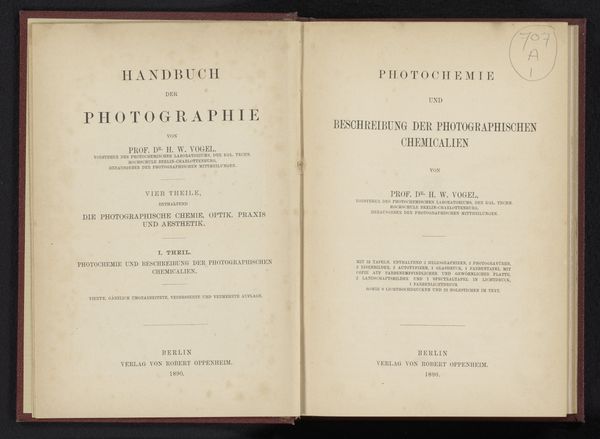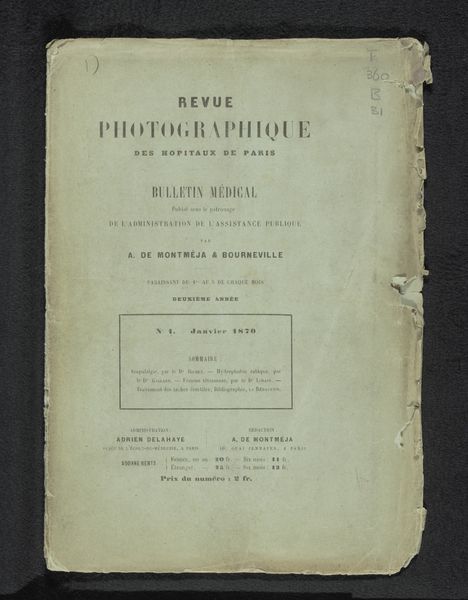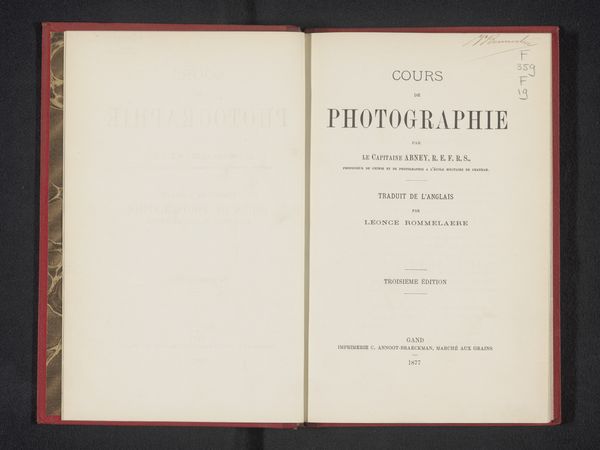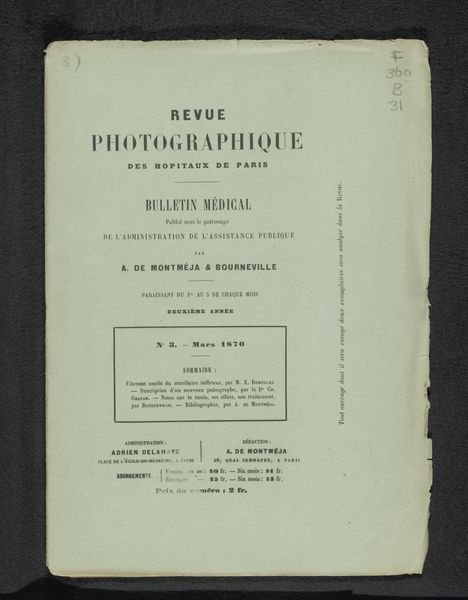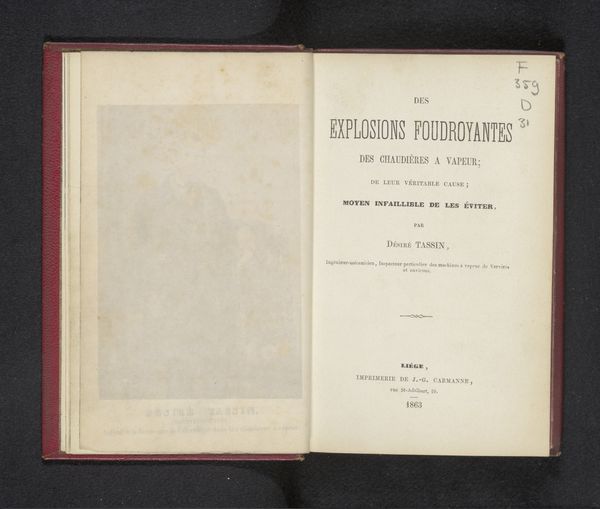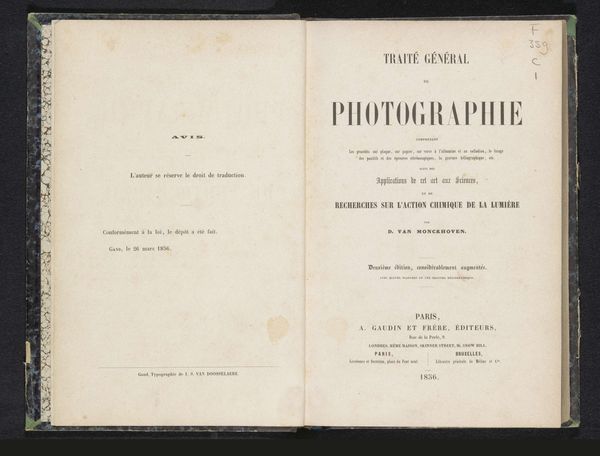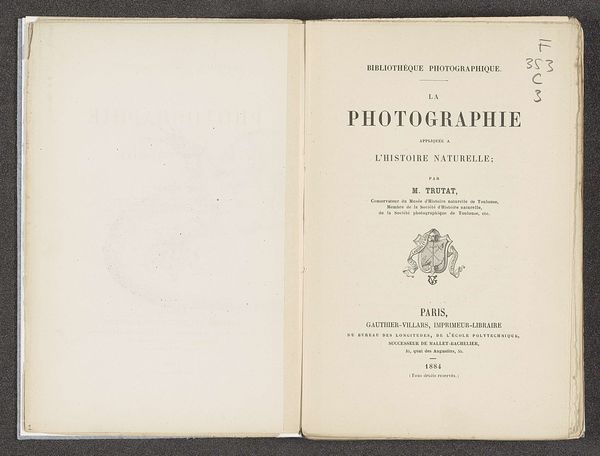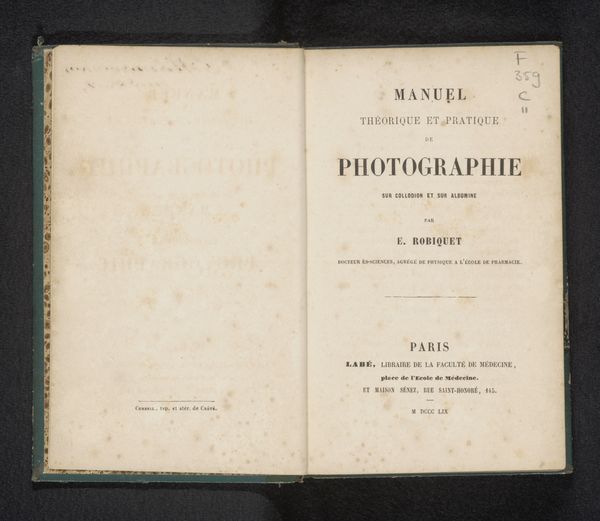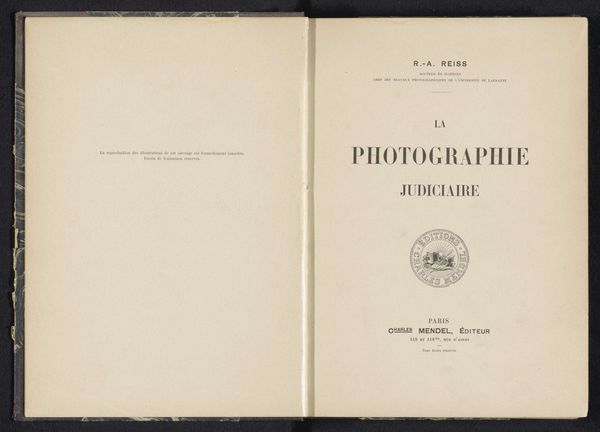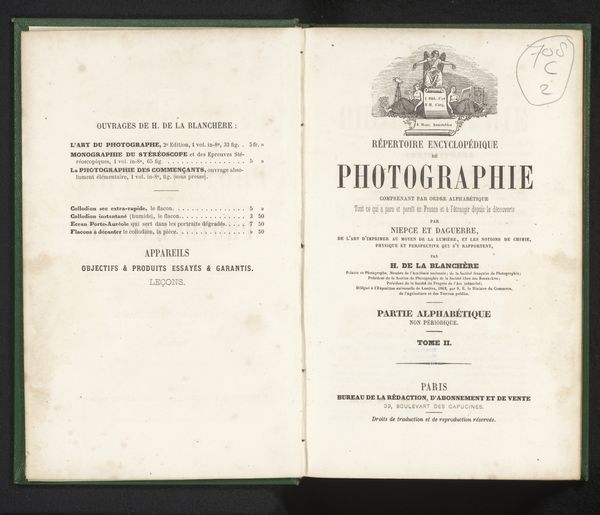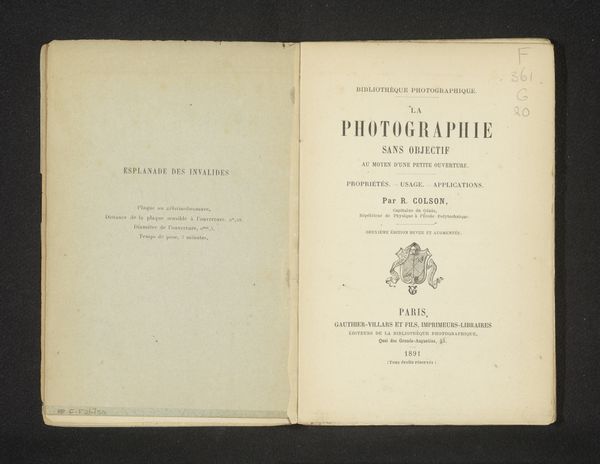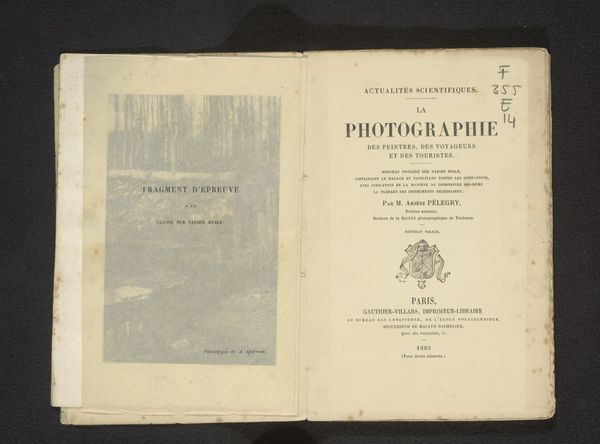
Photographie appliquée à la numismatique monnaies romaines, monnaies consulaires et des familles romaines extraites de la collection du Musée de Carcassonne 1864
0:00
0:00
print, photography
# print
#
book
#
photography
Dimensions: height 300 mm, width 237 mm, thickness 10 mm
Copyright: Rijks Museum: Open Domain
Curator: Here we have Léopold Verguet's "Photographie appliquée à la numismatique, monnaies romaines," dated April 1864. It seems to be a photographic print of a book cover. What's your initial take? Editor: It’s understated, almost austere. The monochromatic palette emphasizes the textual hierarchy. It makes me consider accessibility and audience: Who was meant to read and interpret these ancient coins? Curator: Verguet was indeed aiming for broad accessibility, utilizing photography to reproduce numismatic collections. Photography here democratizes access, extending it beyond those who could physically handle the coins or travel to view them. The museum in Carcassonne was clearly wanting to disseminate their holdings widely. Editor: Absolutely. The careful composition speaks volumes. It's more than just documentarian; there's a deliberate use of typography. The homage to Mgr de la Bouillerie, the Bishop, connects it to the power structures of the time, doesn’t it? It reminds us of the deep ties between religious institutions and the preservation of history. Curator: Precisely. And consider the broader context: mid-19th century France, a time of burgeoning interest in archaeology and history, fueled partly by nationalist sentiment. Roman coinage connected France to a glorious past, legitimizing its present. Editor: Yes, the appropriation of classical imagery is unmistakable. I find it interesting that a religious figure such as l'Abbé Verguet took part in the work on secular coinage imagery. It speaks to the convoluted dynamics that characterized 19th century society. This photography effectively transforms coins, objects imbued with economic power and social status, into vehicles for national narratives. Curator: These Roman coins gain new significance as they transition from currency to symbols. Through this photographic rendering and the book format, Verguet transforms them into portable artifacts, accessible to a growing audience eager to connect with their history. Editor: It makes you wonder, doesn't it, about the role of photography in shaping our collective memory. A powerful testament to the interplay of power, history, and representation, captured on a seemingly simple book cover. Curator: Indeed. This photograph allows us to reflect on the role of institutions in shaping perceptions of value and nationhood.
Comments
No comments
Be the first to comment and join the conversation on the ultimate creative platform.
